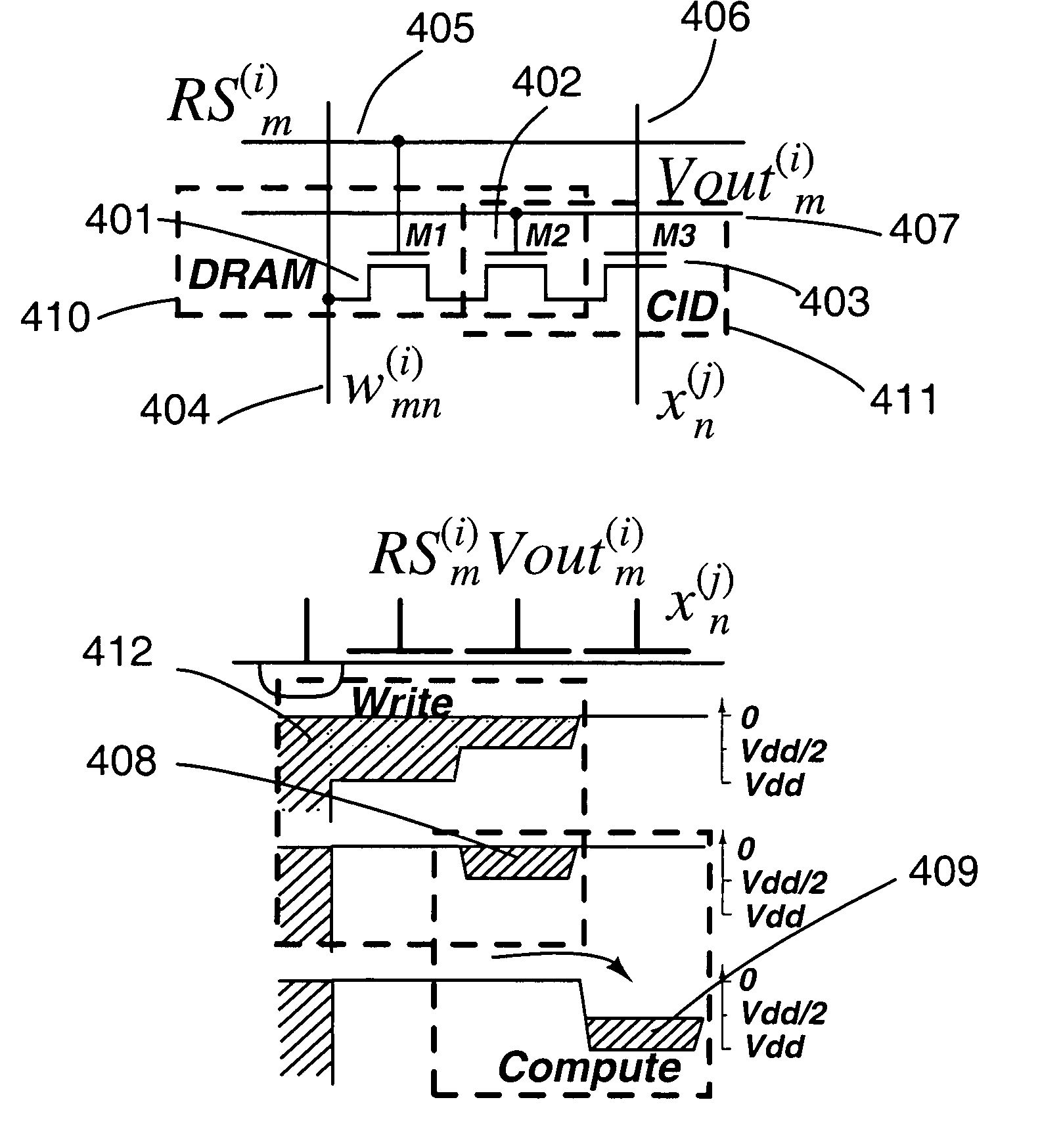High-precision matrix-vector multiplication on a charge-mode array with embedded dynamic memory and stochastic method thereof
a dynamic memory and matrix-vector technology, applied in the field of high-precision matrix-vector multiplication on charge-mode arrays with embedded dynamic memory and stochastic methods thereof, can solve the problems of low computational efficiency, low cell density, and inability to efficiently implement mvm in high dimensions. efficient real-time implementation of mvm, multiprocessors and networked parallel computers
- Summary
- Abstract
- Description
- Claims
- Application Information
AI Technical Summary
Benefits of technology
Problems solved by technology
Method used
Image
Examples
Embodiment Construction
[0021] The present invention enhances precision and density of the integrated matrix-vector multiplication architectures by using a more accurate and simpler CID / DRAM computational cell, and a stochastic input modulation scheme that exploits Bernoulli random statistics of binary vectors.
[0022] The circuit diagram and operation of the unit cell in the analog array are given in FIG. 4. It combines a CID computational element (411) with a DRAM storage element (410). The cell stores one bit of a matrix element wmn(i), performs a one-quadrant binary-binary multiplication of wmn(i) and xn(j) in (Eq. 5), and accumulates the result across cells with common m and i indices. An array of cells thus performs (unsigned) binary multiplication (Eq. 5) of matrix wmn(i) and vector xn(j) yielding Ym(i,j), for values of i in parallel across the array, and values of j in sequence over time.
[0023] The cell contains three MOS transistors connected in series as depicted in FIG. 4. Transist...
PUM
 Login to View More
Login to View More Abstract
Description
Claims
Application Information
 Login to View More
Login to View More - R&D
- Intellectual Property
- Life Sciences
- Materials
- Tech Scout
- Unparalleled Data Quality
- Higher Quality Content
- 60% Fewer Hallucinations
Browse by: Latest US Patents, China's latest patents, Technical Efficacy Thesaurus, Application Domain, Technology Topic, Popular Technical Reports.
© 2025 PatSnap. All rights reserved.Legal|Privacy policy|Modern Slavery Act Transparency Statement|Sitemap|About US| Contact US: help@patsnap.com



